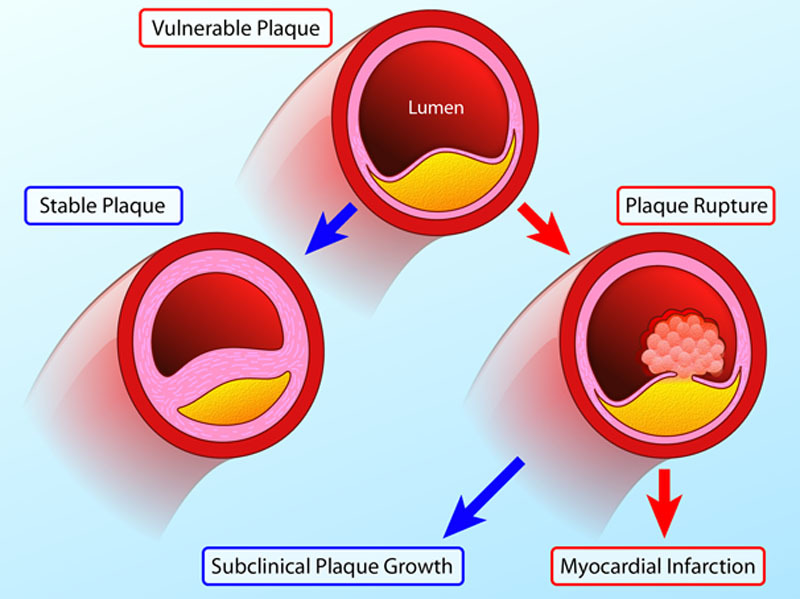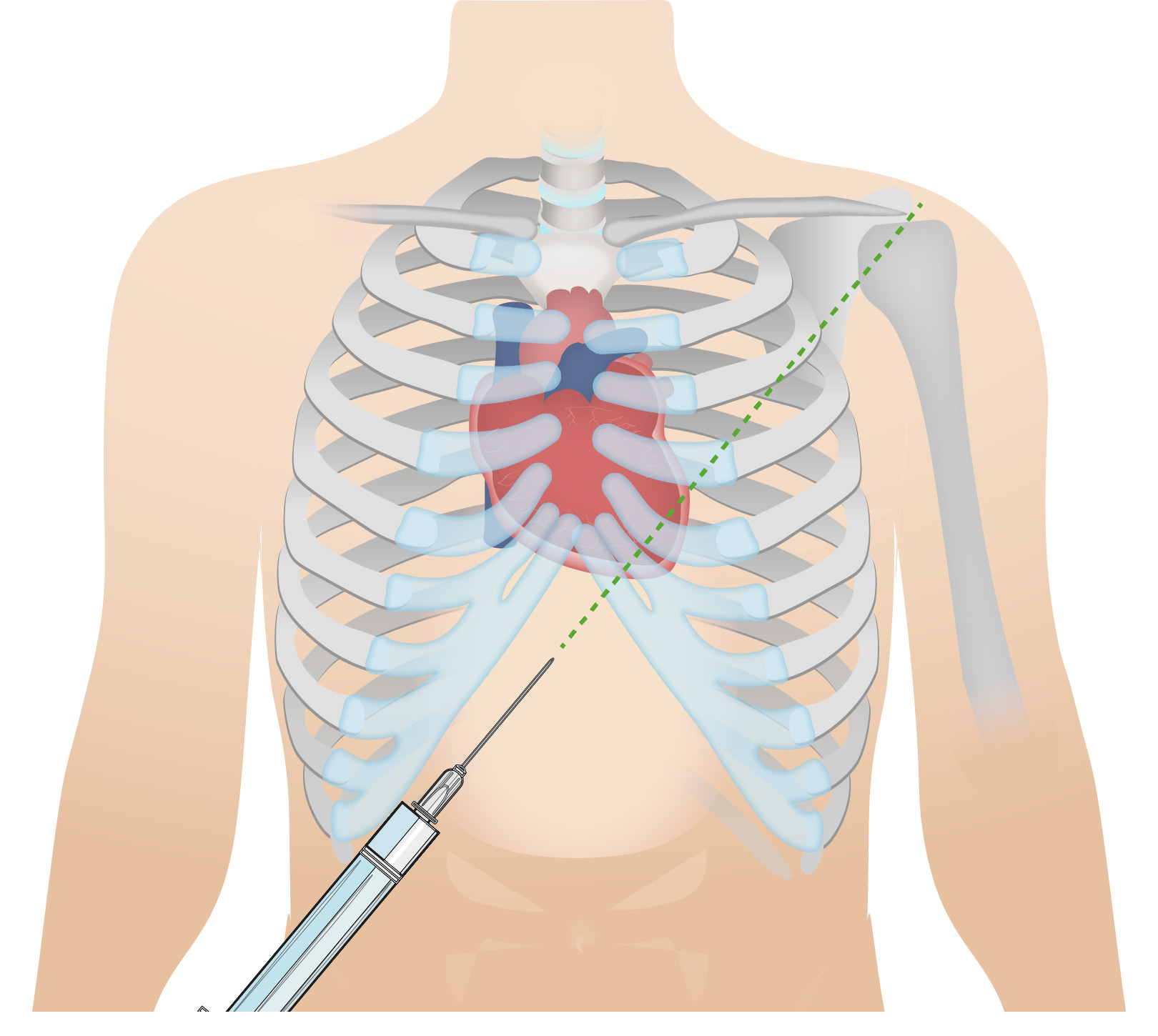Playlist
Show Playlist
Hide Playlist
Chest Pain: Physical Exam & History
-
Emergency Medicine Chest Pain.pdf
-
Download Lecture Overview
00:01 So when we think about the history, you wanna think about what clues you’re getting from the history that might point you in one direction or another in terms of the diagnosis. 00:11 So coronary syndromes are classically associated with pressing or squeezing pain where sharp or pleuritic pain is more commonly associated with pulmonary embolism or pneumothorax. 00:22 Dissection is classically associated with ripping or tearing pain. 00:26 Now, you don't see that all the time in dissection but when a patient tells you, they have a ripping or tearing feeling, that should definitely raise your suspicion for that disease. 00:35 Constant boring aching pain can be caused by esophageal rupture or pericarditis. 00:41 The onset of the pain is very important because sudden onset suggests a sudden catastrophic event like a dissection, a pulmonary embolism or pneumothorax. 00:52 Patients who have radiation of the pain to the arm or the jaw might suggest the possibility of a coronary syndrome whereas radiation into the back is more associated with dissection. 01:04 Diaphoresis and nausea are definitely signs of coronary syndrome whereas dyspnea can be a sign of coronary syndrome but it can also point you towards pulmonary pathology like pulmonary embolism or pneumothorax. 01:17 And then if the patient has neurologic deficits you definitely wanna think about dissection because that's really the only diagnosis that unites chest pain and neurologic findings. 01:28 Vital signs are absolutely critical, so when you're thinking about your patient’s vital signs you wanna think about what they may mean in the setting of chest pain. 01:39 So patients who have fever you might think about esophageal rupture which is commonly associated with infectious mediastinitis. 01:46 But actually, patients with PE can also have low grade fevers as well. 01:50 Sinus tachycardia is often gonna be associated with PE, it can be associated with cardiac tamponade causing shock, also dissection or tension pneumothorax. 02:01 Again, all disease processes that can be associated with shock and tachycardia is compensation for that. 02:09 Patients who are having dysrhythmias, you might think about coronary syndrome or pulmonary emboli which are commonly associated with rhythm disturbances. 02:17 Bradycardia suggest coronary syndrome involving the conduction system. 02:22 Whereas tachypnea suggests the pulmonary cause like pneumothorax or pulmonary embolism. 02:28 Patients with hypotension should definitely make you concern. 02:32 So massive myocardial infarction with cardiogenic shock can cause hypotension. 02:36 Massive PEs can cause hypotension, dissection can cause hypotension if its associated with rupture or tamponade. 02:43 And then tension pneumothorax of course will cause shock. 02:46 So, on your physical exam, the vast majority of patients with chest pains are gonna have reasonably normal exam and you’re not gonna get a lot of information there, but if they have absent breath sounds on one side that should definitely make you think about a tension pneumothorax. 03:01 Whereas muffled heart sounds or might be cause by cardiac tamponade, a new murmur might be associated with dissection or myocardial infarction. 03:11 Pulse deficits are classically associated with dissection although they are not terribly sensitive or specific findings. 03:18 And then jugular venous distention can be associated with tamponade or pneumothorax. 03:23 Patients with unilateral extremity edema can potentially have pulmonary emboli. 03:30 And then focal neurologic deficits like we mentioned, again can be cause by lots of things like stroke or brain tumors but in the setting of chest pain, you definitely wanna think about dissection which is the one diagnosis that unites chest pain with neurologic abnormalities. 03:47 Now, I mentioned before that EKG and chest x-ray are critical for any patient who has chest pain and that's because they provide absolutely essential clues to all of the life-threatening causes of chest pain. 04:02 And here are some examples, so for coronary syndromes, we wanna look for ST segment changes on our ECG, this ECG is an example of an acute...ST elevation myocardial infarction and you can see the ST segment elevations denoted with the green arrows. 04:18 This is an EKG of a patient with pulmonary embolism. 04:22 So here we're seeing tachycardia and you can see a number of EKG changes with pulmonary embolism including non-specific ST segment changes, right heart strain, S1Q3T3 which is a rare finding but definitely suggestive of PE when you see it. 04:38 In this particular case, we're seeing a patient with a new right bundle branch block which is a sign of right sided heart strain and can be associated with pulmonary emboli. 04:47 And then this is an EKG of a patient with pericarditis. 04:51 So, in this case, we're seeing diffuse concave ST segment elevations which are also known as PR-depressions. 04:58 So, you can see where all the green arrows are, the ST segment is up above the isoelectric baseline with a concave morphology that is suggestive of pericarditis. 05:09 Similarly, chest x-ray gives us important clues about diagnoses that we can't afford to miss. 05:15 So, widening of the mediastinum is seen in many cases of aortic dissection and you can see the mediastinal silhouette outlined here on this slide. 05:24 Pericardial effusion you might see cardiomegaly or a globular or water bottle shape heart on your chest x-ray, you can see the cardiac silhouette which is quite abnormal outlined on this film. 05:37 And then lastly, pneumothorax of course can be diagnosed with the chest x-ray. 05:41 In this case, we have a large right-sided pneumothorax which is outlined on this slide and you see absent lung markings as well as a line denoting where the lung tissue is separated from the air collection in the pleural space.
About the Lecture
The lecture Chest Pain: Physical Exam & History by Julianna Jung, MD, FACEP is from the course Cardiovascular Emergencies and Shock.
Included Quiz Questions
What is the most likely cause of chest pain in a patient complaining of ripping or tearing pain?
- Aortic dissection
- Acute coronary syndrome
- Pericarditis
- Pulmonary embolism
- Esophageal reflux
A patient complaining of chest pain was noted to be bradycardic. What is the most likely diagnosis?
- ACS involving the conduction system
- Esophageal rupture
- Tension pneumothorax
- Aortic dissection
- Cardiac tamponade
Which of the following ECG findings is LEAST associated with acute pulmonary embolism?
- Diffuse concave ST elevations
- Sinus tachycardia
- Nonspecific ST changes
- Right axis deviation
- Right heart strain/S1Q3T3
Customer reviews
5,0 of 5 stars
| 5 Stars |
|
5 |
| 4 Stars |
|
0 |
| 3 Stars |
|
0 |
| 2 Stars |
|
0 |
| 1 Star |
|
0 |







